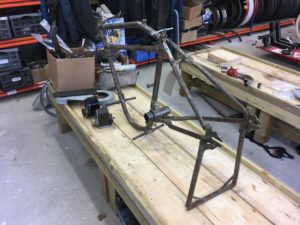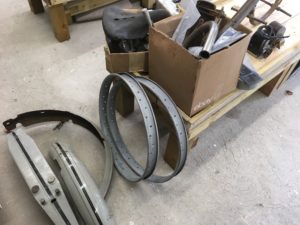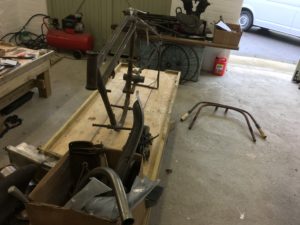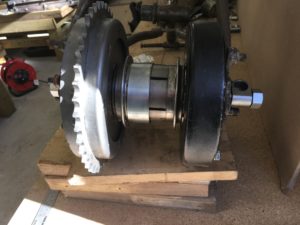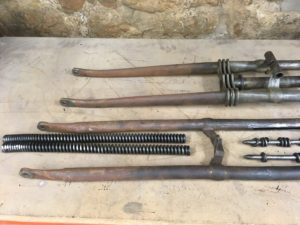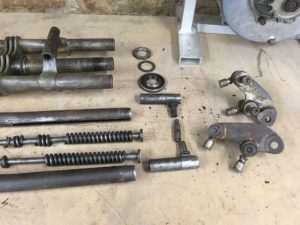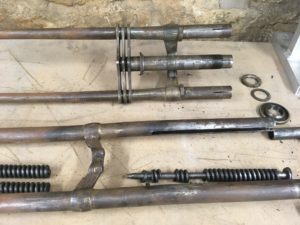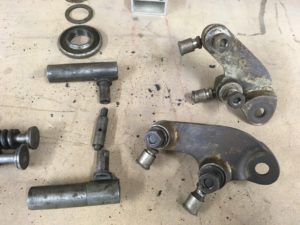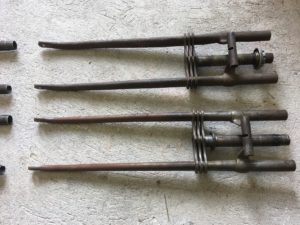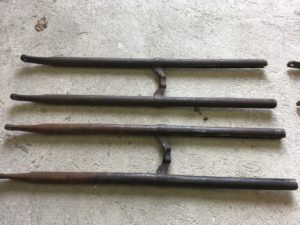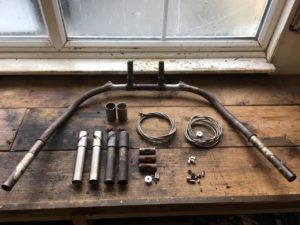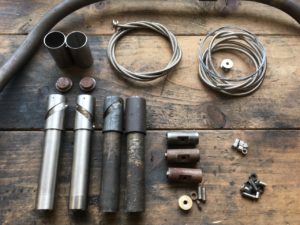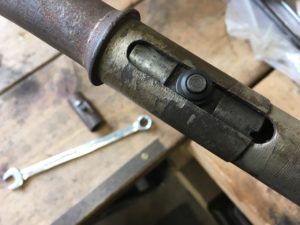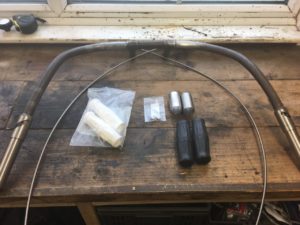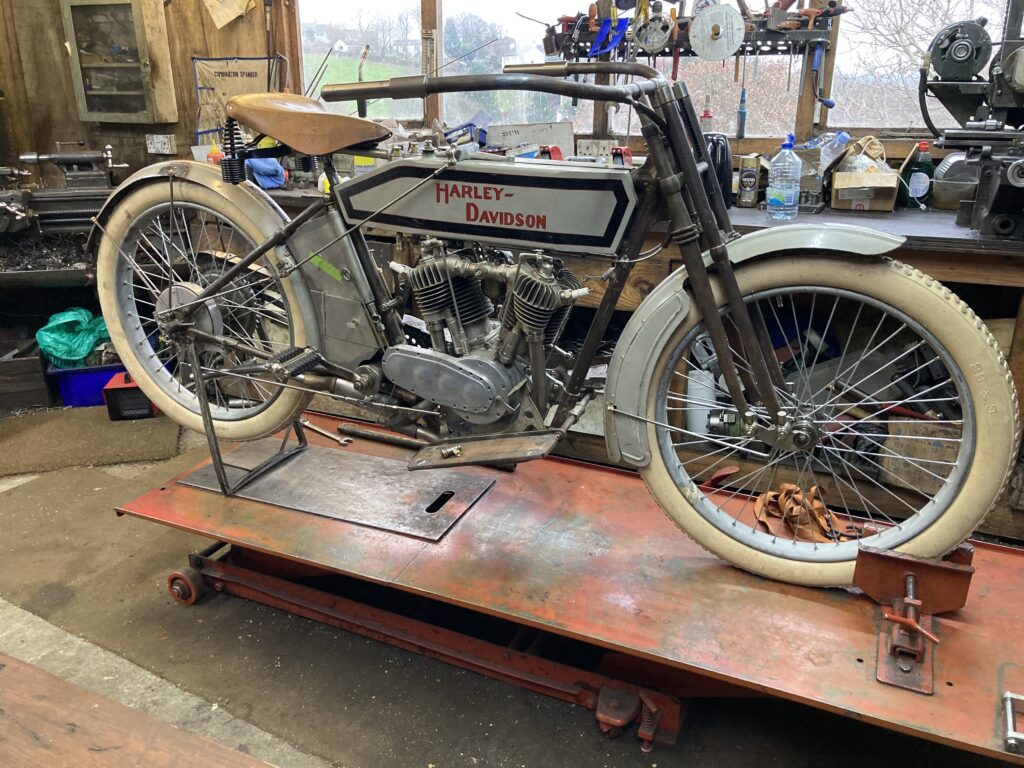1914 10F Build
This bike came in as a fairly complete ‘basket case’ or ‘project’. It is the very desirable two speed variant of the 1914 twin cylinder model.
It was a complete bike and the previous owner has done some work in terms of sourcing the small parts that were missing. The ‘big’ job is going to be the two speed hub. It is largely complete but there are parts missing, others in need of repair and then the issue of putting it all together so that it works because as always, these bikes get ridden. I will need some help in terms of identifying what IS missing and also making the parts needed.
The start point is to lay the parts out, loose assemble them either on the frame or on the bench and determine what parts are missing and or need repair. The frame is complete (!) and correct so next will be to inspect the forks, fit the rear stand and look at the seat post; they never want to come out!
The forks look good; there are the usual broken springs and the fork plunger studs are always broken on these forks. The rockers are complete but I haven’t checked the bushes yet. I have a spare set of front and rear fork legs for comparison.
~~~~~~~~~~~~~~~~~~~~~~~~~~~~~~~~~~~~~~~~~~~~~~~~~~~~~~~
These original bars came with the project. They have needed some repair and straightening but they have come out well. You can always tell repop bars because they are straight and equal on both sides! Originals never are. I have original and repop spirals and will use those that fit and feel the best but at the moment I am just mocking everything up to see what is needed. The outer and inner cables are new as are the small parts.
21.09.19
This is it; the two cylinder two speed. Time to start. The plan is to get together all the parts and then look at what we will need to search for. Most everything is there, there will be plenty of jobs that will need doing but it should be fairly straightforward again.
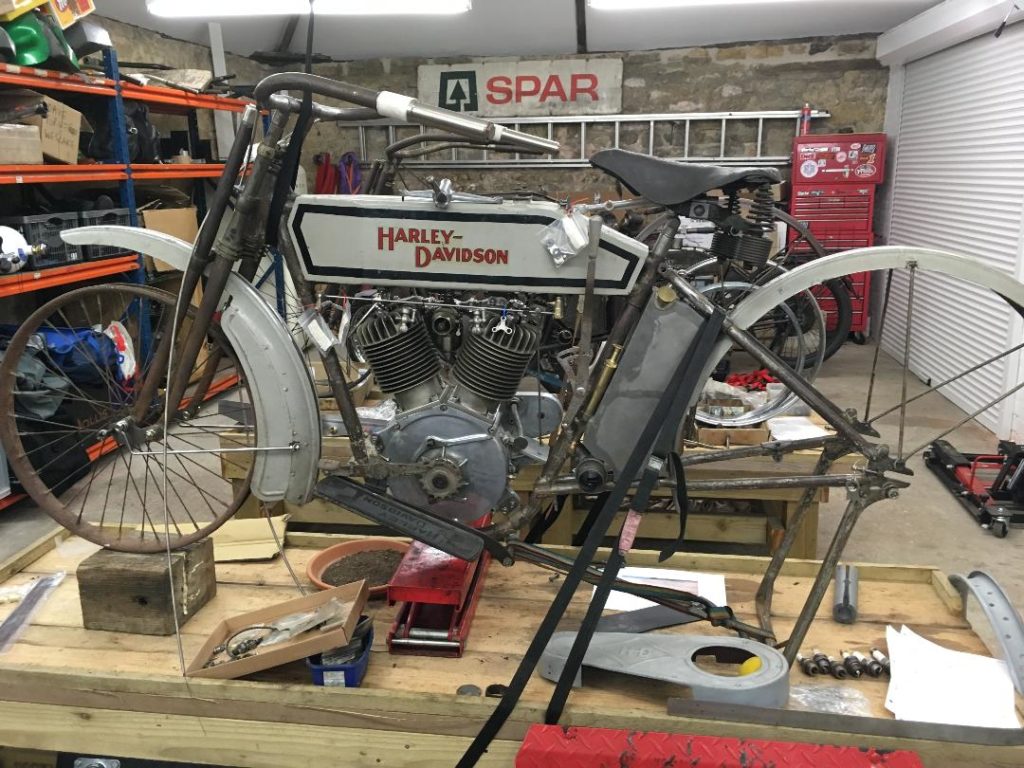
There are plenty of clutch parts included in this project as well as a complete rear two speed hub. I think everything is here plus plenty of extras to trade. I love the Freewheel covers.
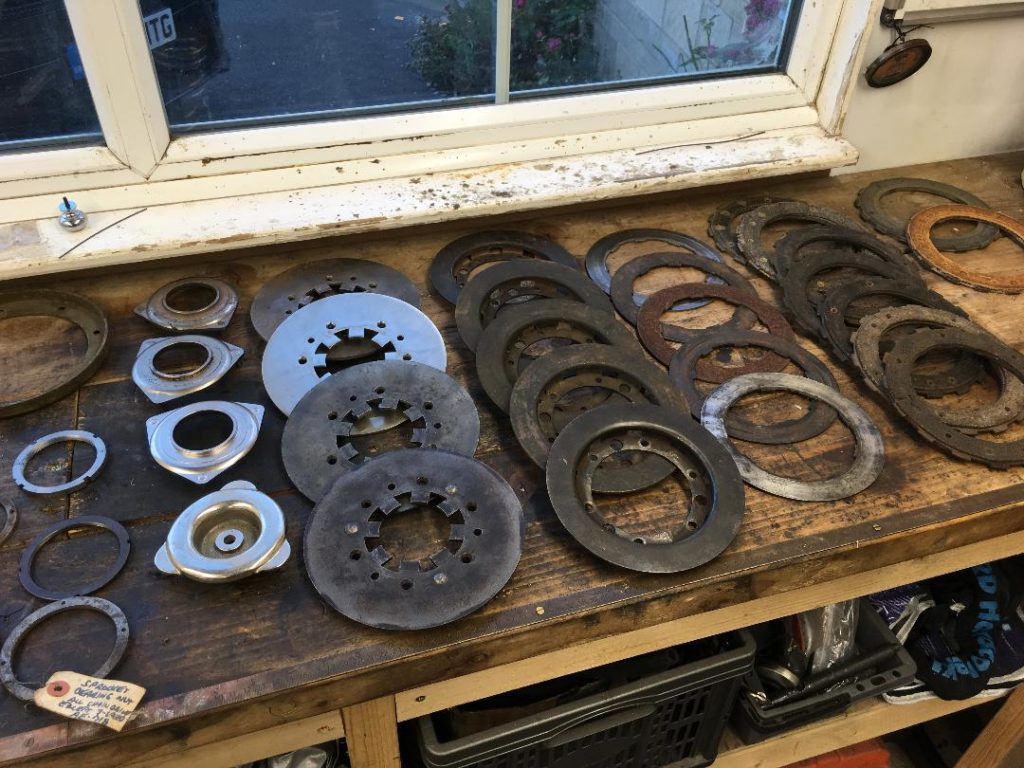
04.10.19
1914 was the first year of the new rear brake. It was on the opposite side to the drive chain (or belt) and replaced the old coaster style break which was inside the hub on 1913 and earlier models. It could still be operated by pedalling backwards, as on the earlier models, through an ingenious but cumbersome rod set up on the right side of the bike.
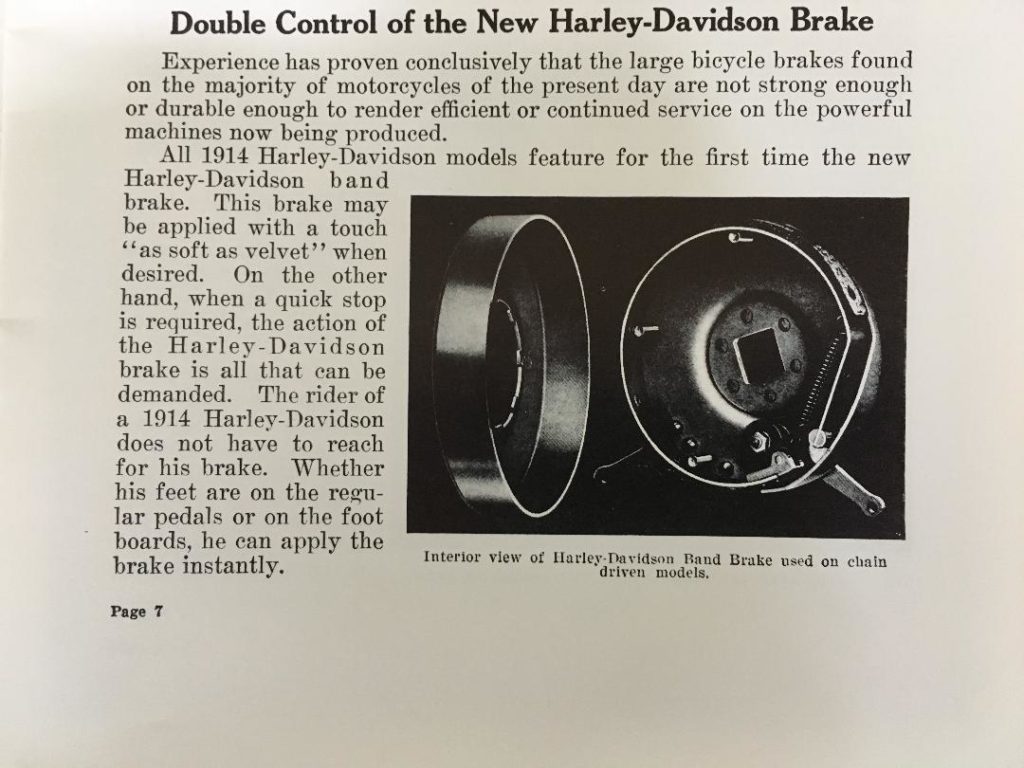
The rear brake that came with the 10F will need plenty of work. I had an actuating arm here already and the band will need to be relined. The bigger job is that the shell (BG230) will need to be metal spayed inside so I have enough material to make it work for the friction lining.
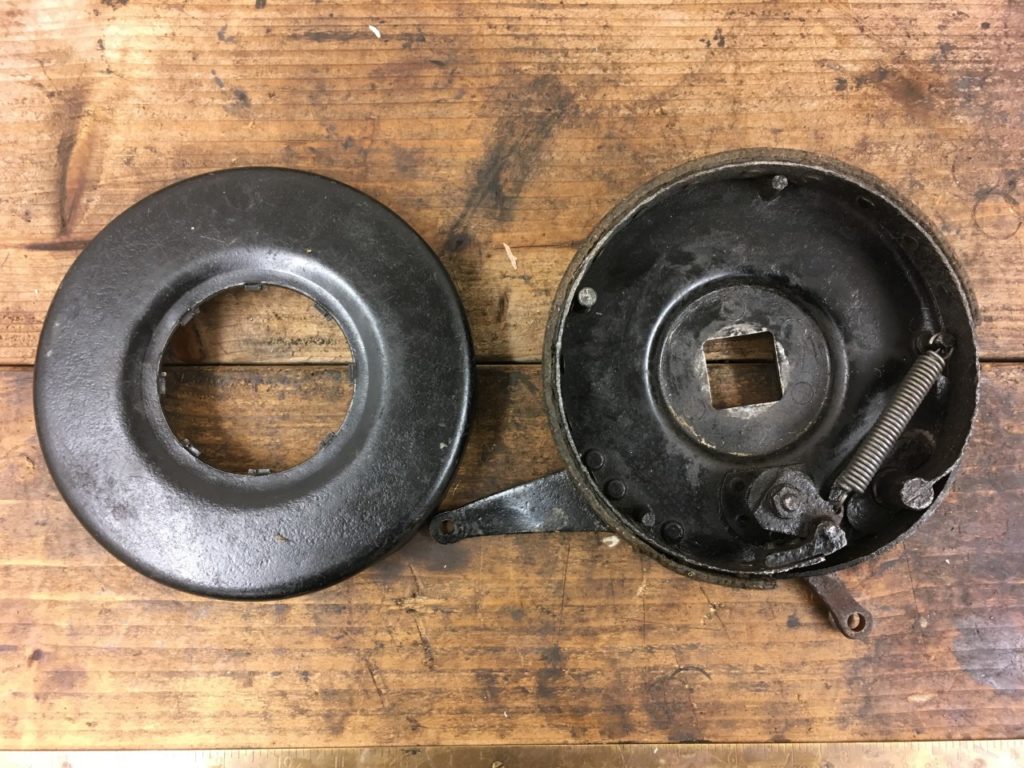
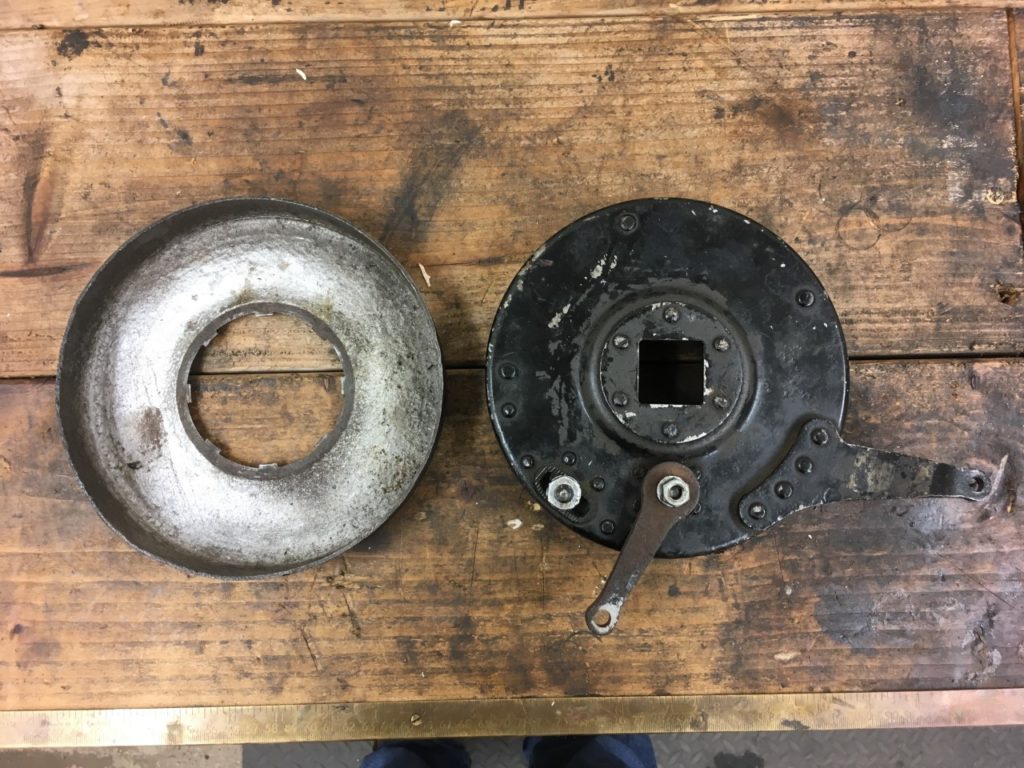
The shorter of the two rods came with the project but it was tired and needed a little work so I bought a complete set from Jethro Smith. They are complete, correct and very keenly priced. His work is always spot on.
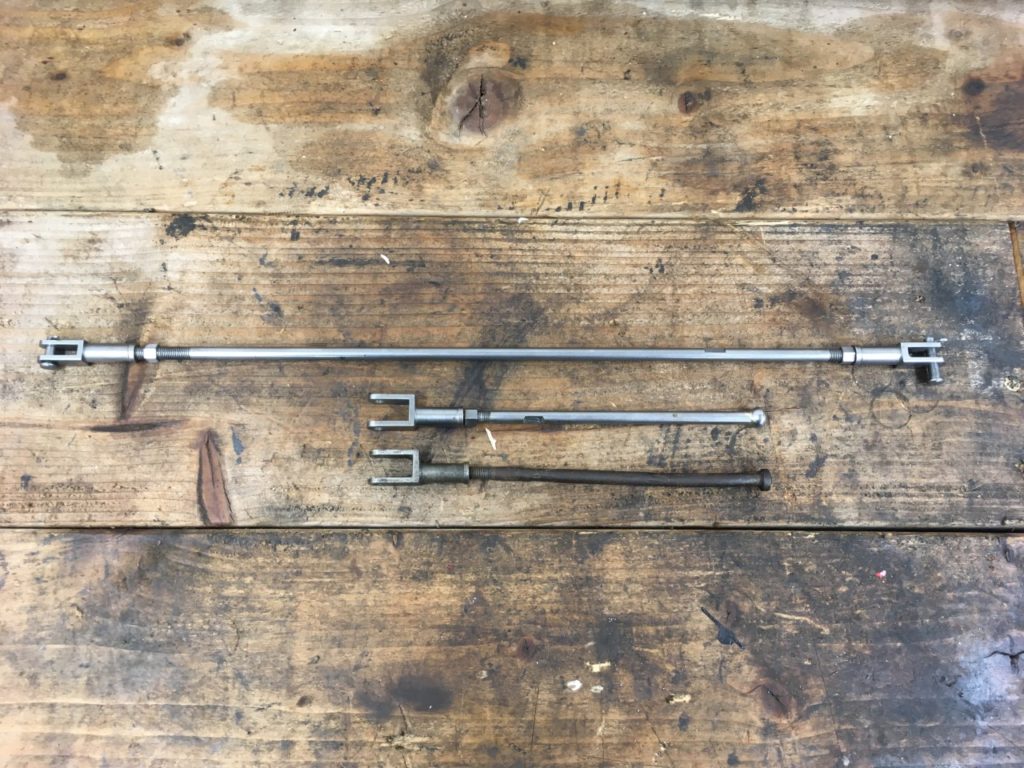
02.12.2019
The build has started on the 10F now. The frame needed the usual tidying up of the threads and the seat post needed to be cut free, the post cut and then re-welded (they all do) and that was about it.
The frame, forks and fenders are all original as is the rear stand and the front hub. The replacement seat post is old repop I think. The front wheel is a mock up with British spokes, original rebuilt hub and a repop rim and the fork rockers, seat bar and oil tank are all repop. I have some original rockers I will add later.
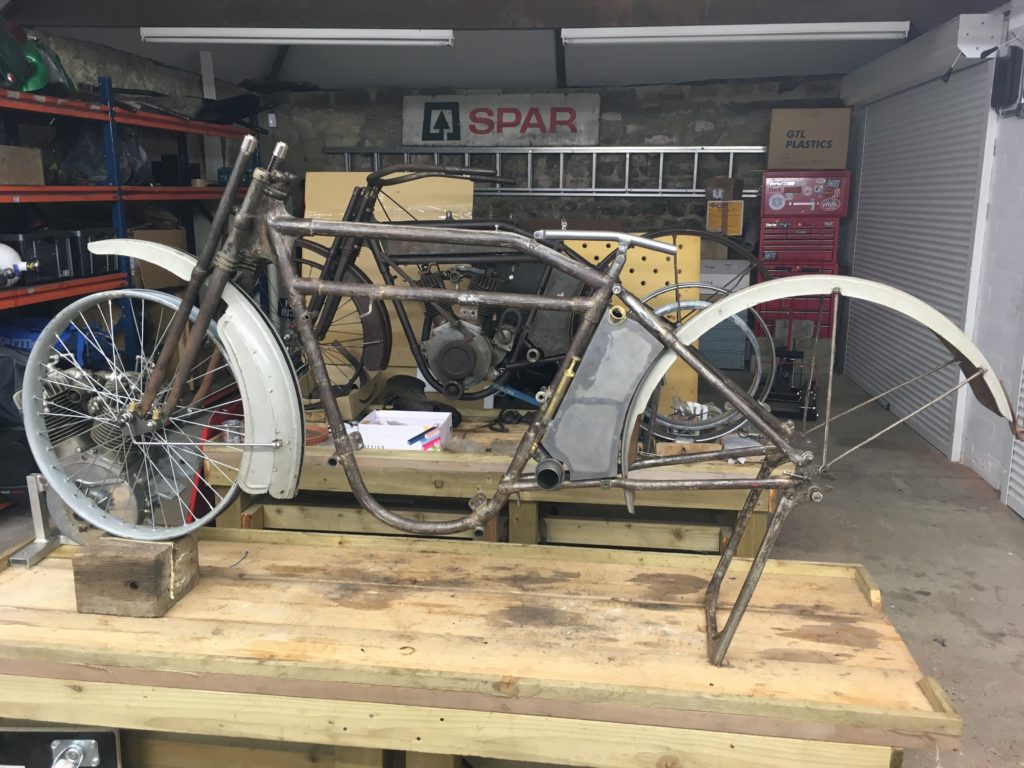
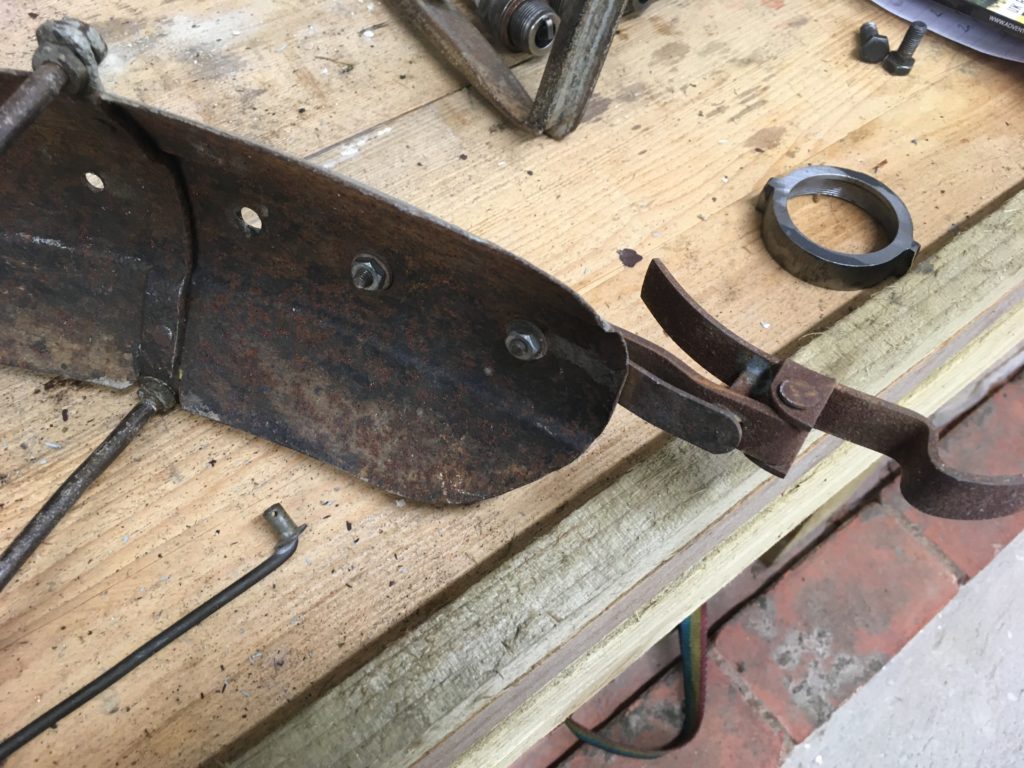
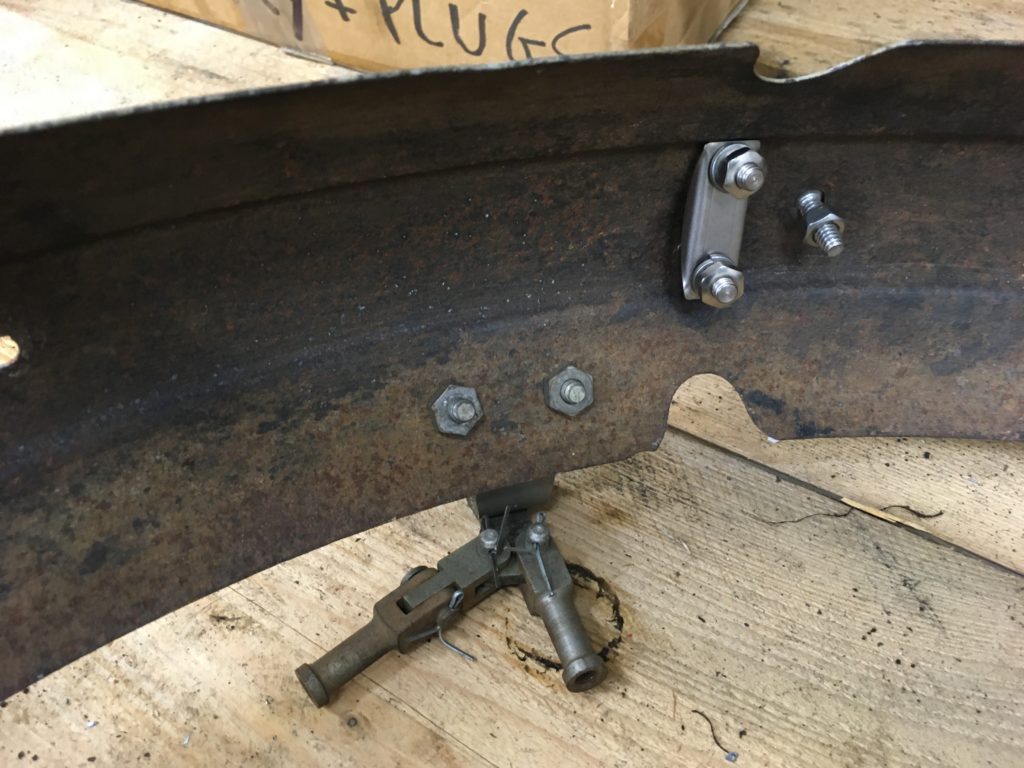
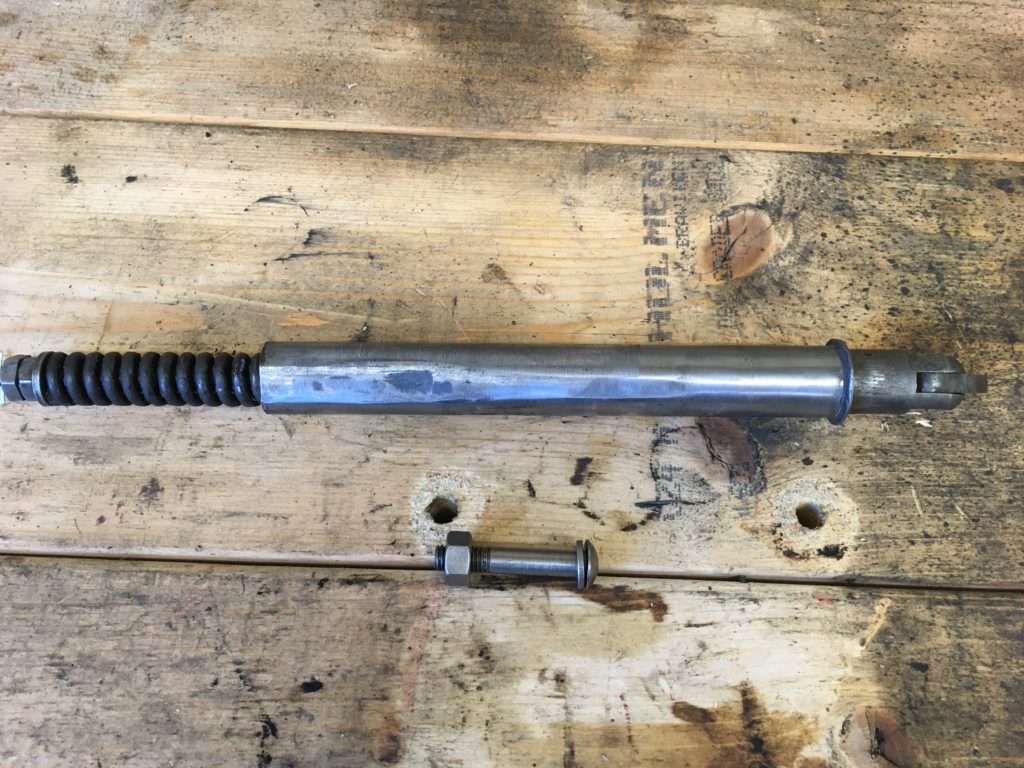
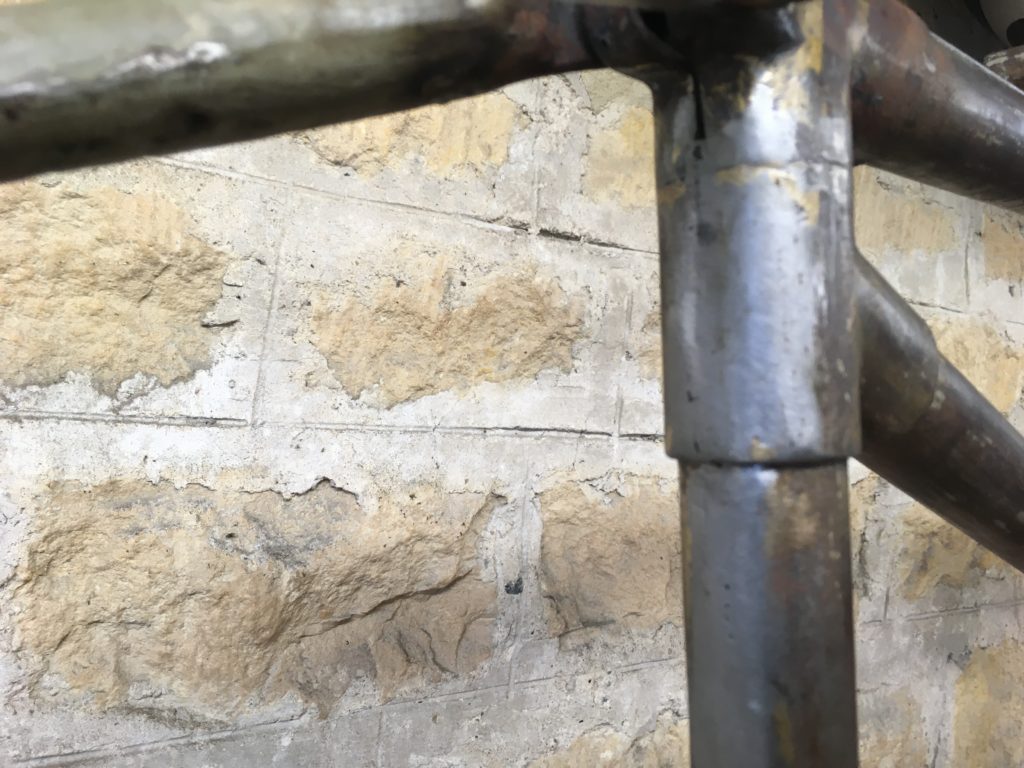
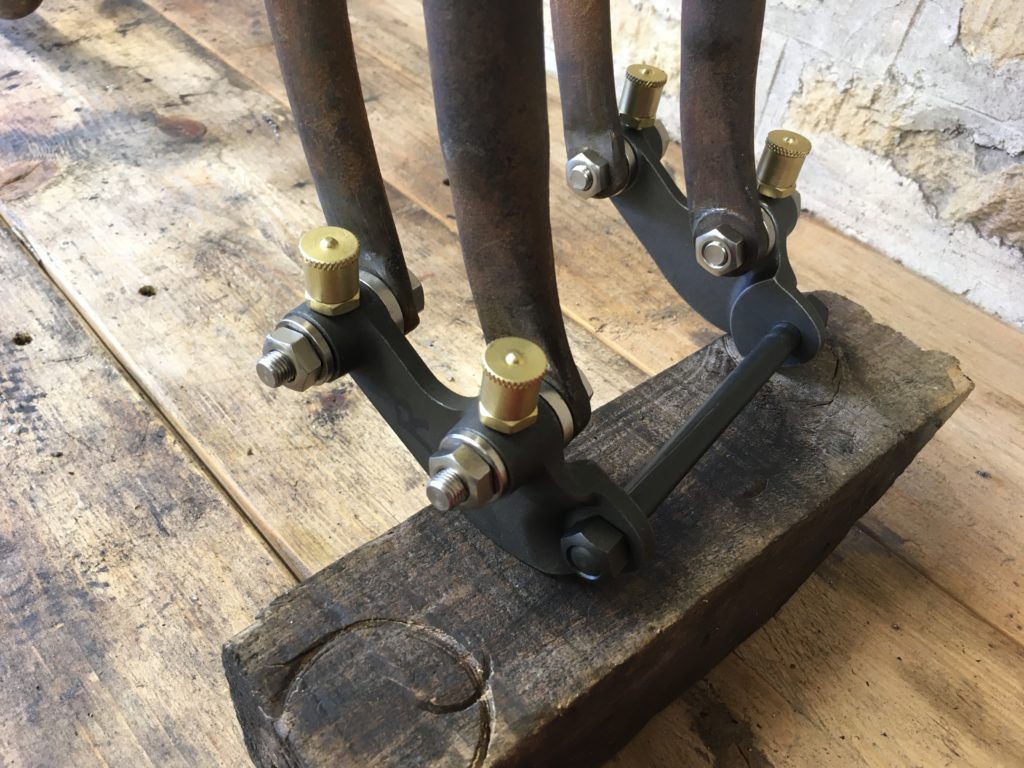
I have been through the footboards and controls. All threads are good but I had to change two of the board mounts. The grease nipple is wrong and the rubber mats are too short but ready to go.
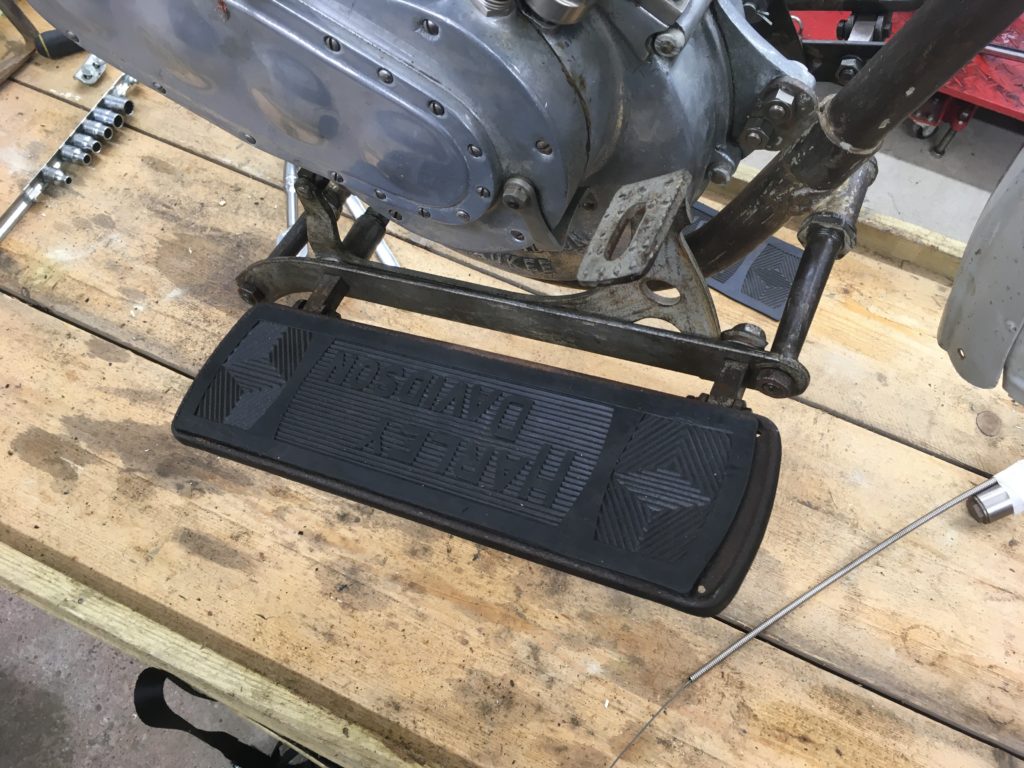
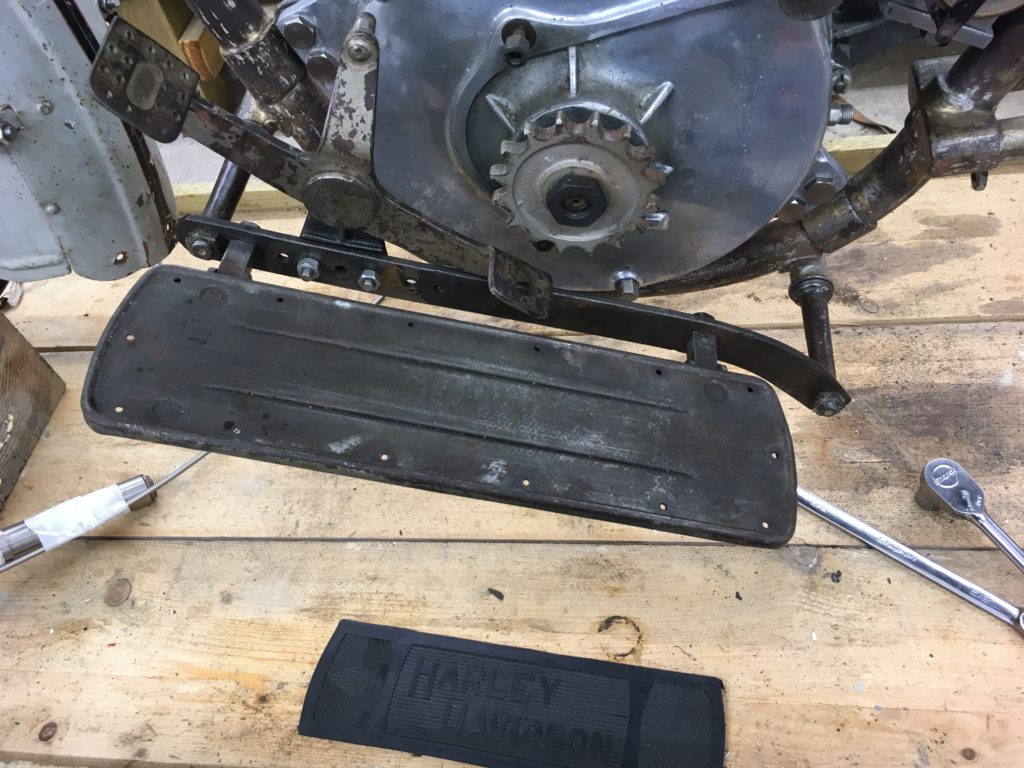
The pedalling gear is all sorted and fitted now. The cranks and internal parts all came with the project. The sprockets needed some work to fit and we needed to fabricate a few small parts.
The pedals came from Aaron Mohr and the brake actuating rods from Jethro Smith. Next is the build of the rear wheel.
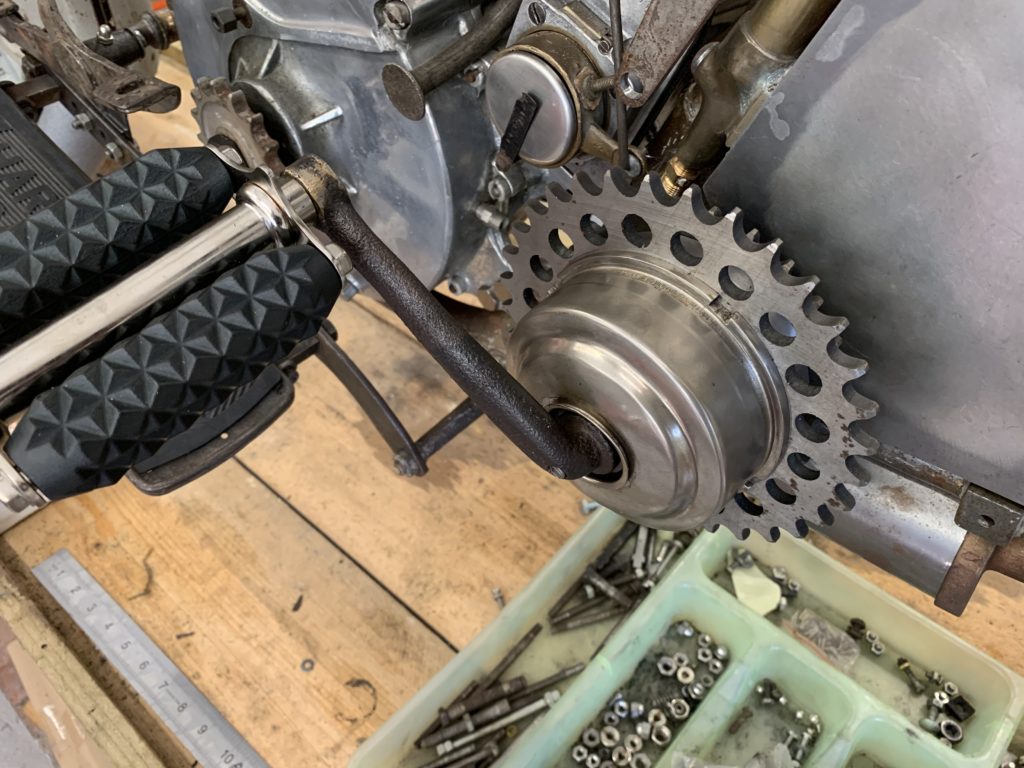
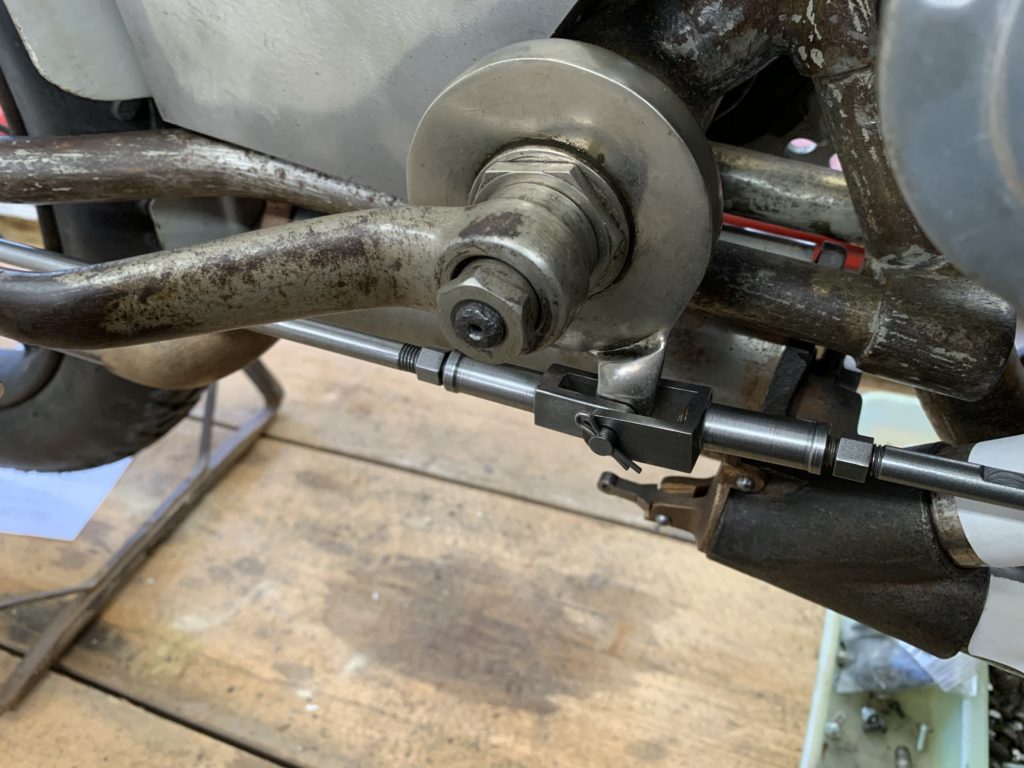
The bike is almost complete now. We need to sort the magneto, improve a few fastenings and then either get her running or start the tear down for paint and plating.
05.05.22
We have now completed the dry build and have a running motorcycle. It will be the first time this machine has run for many years.
Next is the final teardown, some more fettling and then paint and plating. This years Pioneer Run is maybe too ambitious for completion but we will see.

